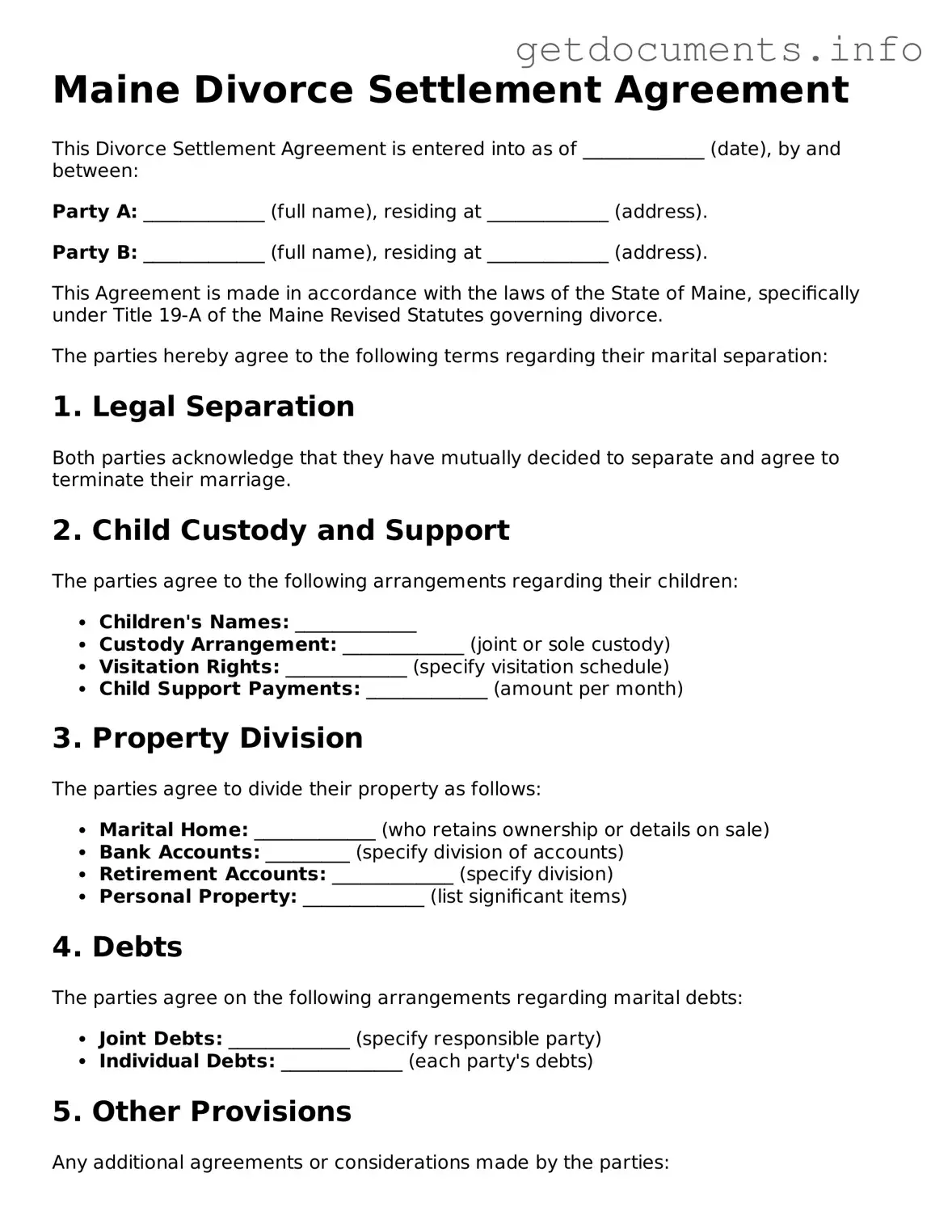In the process of navigating a divorce in Maine, one critical document often comes into play: the Divorce Settlement Agreement form. This form serves as a comprehensive outline of the agreements reached between both parties regarding various aspects of their separation. It typically covers essential matters such as the division of property, child custody arrangements, and spousal support. Each section of the form requires careful consideration, as it reflects the mutual decisions made by both individuals to ensure a fair and equitable resolution. By detailing how assets will be divided and how responsibilities will be shared, the agreement aims to provide clarity and stability during a challenging time. Furthermore, the form addresses the needs of any children involved, emphasizing their welfare and the importance of maintaining healthy relationships with both parents. Completing this document accurately is vital, as it can significantly impact both parties' futures. Understanding its components can lead to a smoother transition and help foster a cooperative post-divorce relationship.
